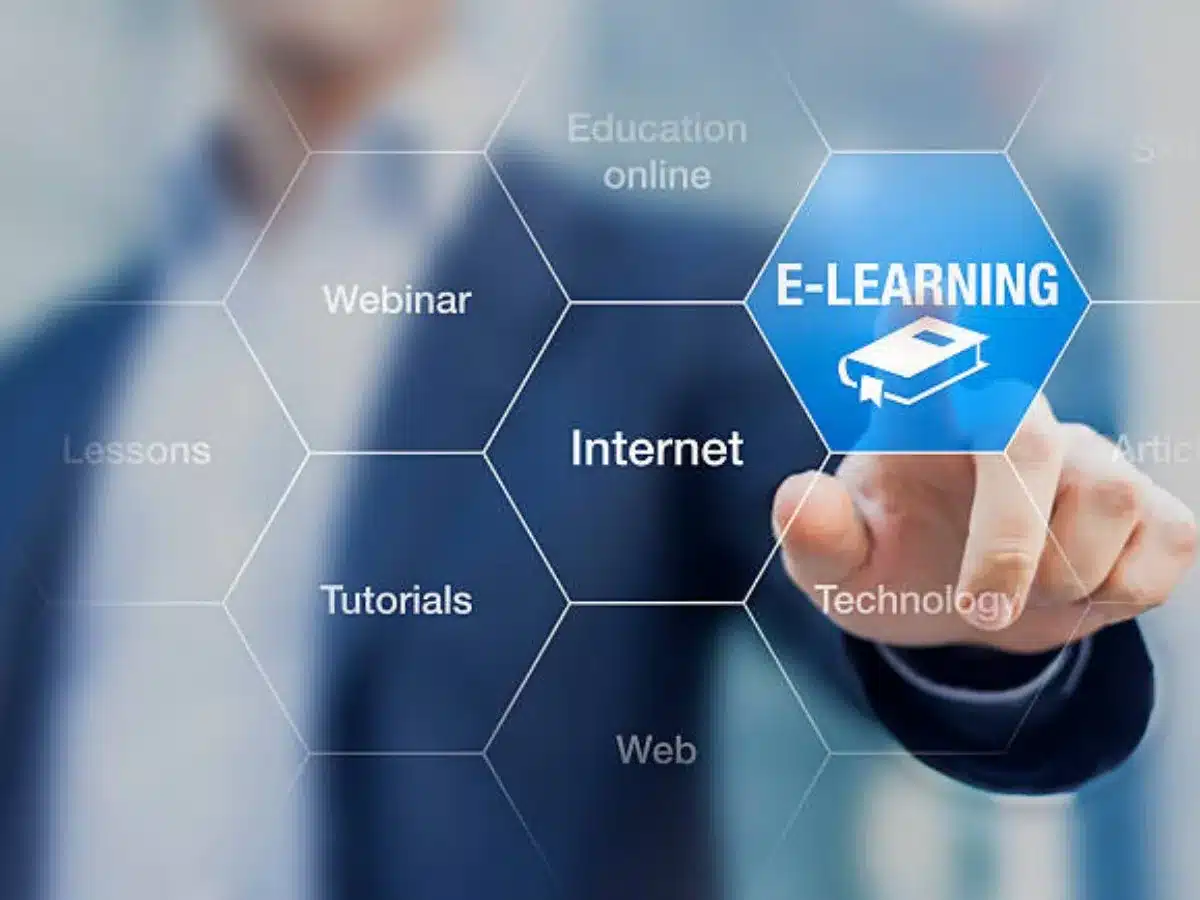แล้วรถยนต์ก็เคลื่อนที่ได้ใช่ไหม?
“ตัดผมเจ็บมั้ย?”
ครูเน้นสถานการณ์การเรียนรู้ที่ดึงดูดเด็กในด้านความคิดสร้างสรรค์ ความคิด และอารมณ์
ใครก็ตามที่เคยใช้เวลาอยู่กับเด็กย่อมรู้ดีว่าเด็กมีความอยากรู้อยากเห็นเกี่ยวกับโลกรอบตัวโดยธรรมชาติเพียงใด จิตใจที่กำลังพัฒนาของเด็กยังพยายามทำความเข้าใจโลกและสถานที่ของตนเองในโลกด้วยการสังเกตและตั้งคำถามกับสิ่งที่คาดไม่ถึง ในทำนองเดียวกัน เราก็ต้องสำรวจเพื่อเรียนรู้ หากคุณเป็นเหมือนฉัน การศึกษาระดับ K-12 ของคุณจะเน้นด้านวิชาการมากกว่าความคิดสร้างสรรค์

การศึกษาเป็นเรื่องยาก ครูยังต้องเผชิญกับอุปสรรคต่างๆ ตั้งแต่การจัดการห้องเรียน ความปลอดภัยของนักเรียน และสุขภาพทางอารมณ์ ไม่น่าแปลกใจที่บางครั้งมักมองข้ามแง่มุมที่สร้างสรรค์และสำรวจมากขึ้นของการสอน เราทราบดีว่าผู้สอนเห็นคุณค่าของสิ่งเหล่านี้
โชคดีที่เทคโนโลยีที่แพร่หลายในระบบการศึกษาช่วยให้เราสามารถแก้ไขปัญหาต่างๆ ในโรงเรียนได้อย่างมีประสิทธิภาพ และช่วยให้เด็กๆ บรรลุศักยภาพสูงสุดของตนเอง ด้วยเครื่องมือที่ได้รับการออกแบบอย่างเหมาะสม เราสามารถปรับปรุงการสอนที่ยอดเยี่ยมและส่งเสริมให้ครูสามารถสร้างแรงบันดาลใจให้กับนักเรียนได้
#1. การเรียนรู้เชิงรุกที่ส่งเสริมการแสดงออกในตนเอง
โอกาสที่นักเรียนจะได้มีส่วนร่วมกับข้อมูลและแสดงการเรียนรู้มีที่ใดบ้าง การมีส่วนร่วมและความมั่นใจจะเพิ่มขึ้นเมื่อนักเรียนสามารถแสดงความคิดของตนเองได้หลายวิธีและได้ยินความคิดเห็นที่นำมาอภิปรายในชั้นเรียน การสอนที่ใช้จินตนาการ การนำเสนอข้อมูล และการรวบรวมผลงานของนักเรียนโดยครูจะกระตุ้นให้นักเรียนได้แสดงผลงานที่สร้างสรรค์
#2. ปรับปรุงการโต้ตอบระหว่างนักเรียนกับครู
เทคโนโลยีจะไม่สามารถแทนที่ครูได้ และไม่ควรเป็นเป้าหมายของครู การเชื่อมโยงและการสนับสนุนจากครูช่วยให้นักเรียนพัฒนากรอบความคิดแบบเติบโตและสร้างทักษะทางสังคมและอารมณ์ ไม่ว่าจะอยู่ในห้องเรียนจริงหรือออนไลน์ เทคโนโลยีสามารถช่วยให้ครูโต้ตอบกับนักเรียนได้
ครูสามารถให้ข้อเสนอแนะที่ปรับแต่งให้เหมาะกับนักเรียนและเป็นความลับได้ เพื่อส่งเสริมการรู้คิดเชิงอภิปัญญาและช่วยเหลือผู้ที่ต้องการความช่วยเหลือ การสร้างความสัมพันธ์ที่ไว้วางใจได้กับนักเรียนช่วยให้ครูสามารถปรับปรุงสภาพแวดล้อมในห้องเรียนและผลการเรียนรู้ได้

#3. ปกป้องนักเรียนด้วยรั้วกั้นที่จัดวางอย่างดี
เทคโนโลยีสามารถเปิดประตูได้หลายบาน แต่ไม่ใช่ทุกบานที่ปลอดภัยหรือเหมาะสมสำหรับนักเรียนที่จะก้าวเข้ามา โดยเฉพาะอย่างยิ่งในชั้นเรียน โรงเรียนสามารถใช้เครื่องมือต่างๆ เพื่อให้นักเรียนมีสมาธิกับงานที่โรงเรียนได้ ขณะเดียวกันก็ให้การสนับสนุนในยามวิกฤต ด้วยมาตรการป้องกันที่เหมาะสม นักเรียนสามารถสำรวจความสนใจและความอยากรู้ของตนเองได้อย่างอิสระมากขึ้นในสภาพแวดล้อมการเรียนรู้แบบดิจิทัล

#3. เสียงของนักเรียนที่ได้ยิน
ครูหลายคนประสบปัญหาในการดึงดูดนักเรียนให้เข้าร่วมชั้นเรียน และการขาดการมีส่วนร่วมของนักเรียนทำให้เกิดคำถามเกี่ยวกับการมีส่วนร่วมของนักเรียน พวกเขาเป็นเจ้าของการศึกษาของตนเองหรือไม่
นักเรียนอาจเขินอาย ไม่มั่นใจ หรือไม่เข้าใจเนื้อหาหรือคำถามในการอภิปรายในชั้นเรียน พวกเขาอาจไม่ต้องการทำให้ตัวเองอับอาย หรืออาจคิดรอบคอบมากกว่าเพื่อนร่วมชั้น
ข้อเสนอแนะของเรา

โปรแกรมของเรา ช่วยให้นักเรียนสามารถแบ่งปันความคิดและความเชี่ยวชาญได้ตามความเร็วของตนเองมากขึ้น ผู้สอน อาจปรับความเร็วของเซสชันหรือให้อิสระกับนักเรียนมากขึ้นและช้าลงเพื่อการทำงานแบบซิงโครนัส ดังนั้นแม้ว่าเด็กจะไม่ยกมือขึ้น ครูผู้สอนก็มั่นใจได้ว่าเด็กมีส่วนร่วมและก้าวหน้าไปพร้อมกับคนอื่นๆ ในชั้นเรียน ความท้าทายในระบบการศึกษา K-12 ยังคงมีอยู่เสมอ แต่ความท้าทายแต่ละอย่างมอบโอกาสในการกระตุ้นความสนใจ การมีส่วนร่วม และการเติบโตทางวิชาการของนักเรียน เครื่องมือการเรียนรู้แบบดิจิทัลต้องพัฒนาเพื่อรองรับผู้สอนและเปิดโอกาสให้เกิดความคิดสร้างสรรค์ ความอยากรู้อยากเห็น และความมหัศจรรย์ในห้องเรียนมากขึ้น








